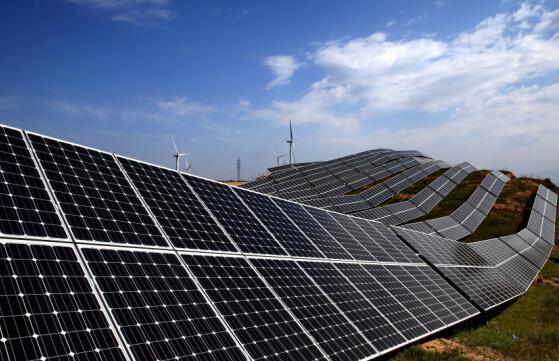Low-carbon consumption key to reduce emission

This is the wind & solar power plant in Xuanhua County, Zhang Jiakou City in Hebei Province, which now vigorously implements its low-carbon strategy with the aim that the proportion that renewable energy consumption takes in the city’s total energy consumption is improved to 55 percent by 2020.
Carbon emissions due to anthropogenic activity have been the dominant cause of observed global warming since the mid-20th century, and the key to mitigating the damage caused climate change lies in reducing human carbon emissions. Consumption, the main contributor to carbon emission, has a major impact on low-carbon economy.
Consumption, emissions
With the development of the world economy, growing consumption has brought with it higher carbon emissions. Studies have shown that technological progress and resource efficiency in carbon output have failed to offset rising levels of carbon.
Residential consumption, transportation and home appliance consumption are sectors that generate the highest amount of energy consumption and carbon emissions. But from a global perspective, low-carbon consumption extends beyond these areas, permeating all sectors of life, including food, clothing, housing and other daily necessities. Countries have taken measures to comprehensively control carbon emissions, such as taxing luxury consumption and limiting waste or supporting circular economies and green consumption.
China is now the country that produces the most carbon emissions, much of which is generated by consumption. The most heavily populated country, China ranks first in terms of the number of consumers, which means that the country must shoulder a great responsibility in global climate governance.
Low-carbon consumption
Such responsibility requires low-carbon consumption from each consumer, who helps to mitigate the damage of climate change by purchasing and consuming energy-saving products and by other measures to conserve, such as water, energy and material conservation as well as reducing the use of disposable items.
To promote low-carbon consumption, the Chinese government should design and implement low-emission development strategies. One is energy policy. The role of the market mechanism can be given full play so that the price of energy and other resources truly reflects their value and degree of scarcity while production of high-carbon products can be inhibited.
Government regulation through fiscal policy and taxation, finance and other means is also important to encourage the innovation and application of low-carbon technology. The other is educational guidance. By advocating and developing low-carbon culture, government can make consumers aware of the importance of changing their concept of consumption.
It needs to be noted that in addition to being the policy architect of the low-carbon economy, the Chinese government should set an example in low-carbon consumption because it is a consumer, too. According to China’s National Bureau of Statistics, the consumer spending of the Chinese government accounts for an increasing proportion in the country’s final consumption expenditure, growing from 21.4 percent in 1978 to 26.1 percent in 2014, which makes the government itself a major constituent of low-carbon consumers.
(edited by MA YUHONG)
